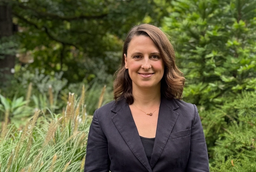
Floods and storm tides have always threatened coastal regions and forced their inhabitants to protect themselves against the forces of nature. But land reclamation measures such as embankments have also been changing the coast for centuries.
Daniel Jankowski, a doctoral candidate at the Institute of History at the Technische Universität Braunschweig, would now like to examine these changes as part of the DFG-funded project “Deichbaukonflikte. A History of Knowledge and the Environment of North Frisian Coastal Protection Infrastructure, 1902–1991). Using the example of the embankments of Cecilienkoog, Sönke-Nissen-Koog and Beltringharder Koog, he is analyzing the human and non-human factors that transformed the coastal landscape of North Frisia in the 20th century.
In times of rising sea levels and increasing extreme weather events, coastal protection infrastructures are of central importance for sustainably protecting coastal regions such as the North German North Friesland from the consequences of climate change. Dikes, groynes and lahnages are some of the most important instruments that coastal residents have been using for centuries. But the need for protection is only one of many motives for reshaping the coastal landscape.
For example, economic interests can also be behind embankments, as Daniel Jankowksi, a doctoral student at the Institute of History at the Technische Universität Braunschweig, explains using the example of the agricultural use of polders: “As soon as the land in front of a dike reaches a certain height, it is possible to protect it from high tides by building a new dike further seawards, so that agriculture can be practised there all year round. If this is done, the area enclosed by the dike is called a “Koog” in Schleswig-Holstein, a “Groden” on the East Frisian coast, or a “Polder” in the Netherlands.
Insights into land reclamation processes
Over the next three years, Daniel Jankowski will be working on the DFG-funded project “Dike-building Conflicts. A History of Knowledge and the Environment of North Frisian Coastal Protection Infrastructure, 1902–1991) and will use previously unexamined source material to examine the processes behind the embankment of the Cecilienkoog (1905), Sönke-Nissen-Koog (1924) and Beltringharder Koog (1987). The selected areas are part of the Reußenköge, which are among the largest contiguous land reclamation measures of the 20th century. Their history provides insights into historical transformation processes of the North Sea coast and the development of the infrastructure that protects the coast from storm surges and flooding today.
The project focuses on three fundamental questions:
- How have human coastal protection measures and non-human environmental factors changed the North Frisian coast in the 20th century?
- Which different groups of actors and experts were involved in this knowledge-based transformation process of the North Frisian coast?
- How have their agency and knowledge changed over time?
Historical environmental interventions as a space for future experiences
The coastal landscape that emerged in the 20th century was the result of conflict-ridden negotiation processes between different groups of actors, who were always influenced by environmental factors, according to the project's basic assumption. In particular, non-state actors such as building contractors, marsh farmers and environmentalists, as well as environmental factors such as sedimentation, weather conditions and the area's flora and fauna, had a decisive and hitherto unexamined influence on dike construction.
The microhistorical study of the three dike construction projects offers the opportunity to take a closer look at the role of the groups of actors and environmental factors over a longer period of time and to examine their significance for coastal protection. The detailed historical examination enables a differentiated understanding of the development of coastal protection infrastructures and thus also forms the experiential basis for future debates on environmental interventions of this kind in the German coastal regions.
About the project
For more information, see: https://dike.hypotheses.org
and https://www.tu-braunschweig.de/inge/institut/team/wissenschafts-und-technikgeschichte
Contact person

More Posts
All
Planned climate game receives start-up funding
Nordmedia funds development of a video game on climate issues
1 min. Reading time
1.5 – one scientist, five questions with Prof. Dr. Carola Paul
Head of the Department of Forest Economics and Sustainable Land Use Planning at the University of Göttingen and Principal Investigator in the Climate Future Lab FoResLab
4 min. Reading time
Christiane Thoroe – Communications and public relations Officer
Who we are: The ZKfN-team
2 min. Reading time